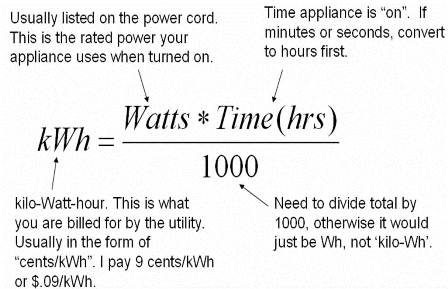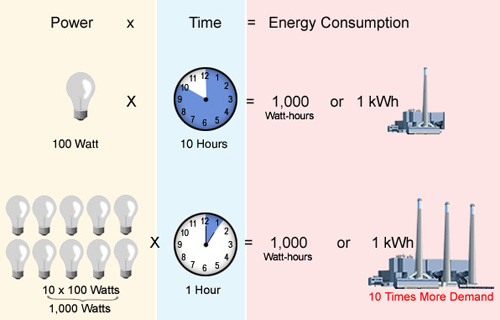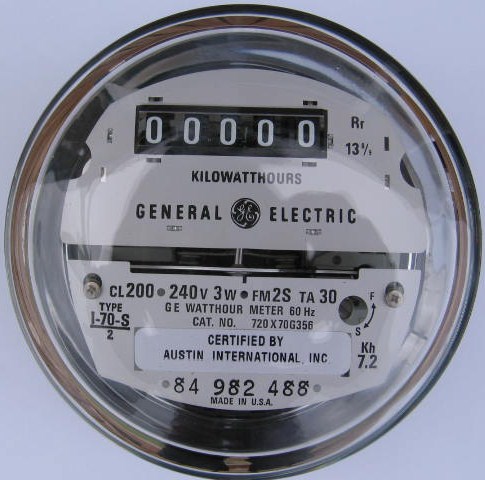Your power bill explained
Your electricity is measured in kwh.
What is kWh?
- kWh is a unit of energy.
- kWh = kilo Watt hour.
- Watt is a unit of power.
- A kilo is a one thousand multiplier.
- A kWh is the amount of power consumed/generated over a period of one hour.
- For example, a 100 Watt light globe left on for 10 hours would consume 1kWh, that is, 100 Watts x 10 hours = 1,000 Watt hours = 1kWh.
- 1kWh = 3.6 Mega Joules.
- 1kW = 1.34 Horsepower.

Your electricty bill has a lot of information on it. They usually come every three months.
On your bill there will be how many kwh you have used since the last bill and also your daily average.
So say for example, if you have an average usage of 20khw/day and the cost of 1 kwh is 30 cents.
Therefore your daily cost for that period would be 20kwh x 30 cents = $6.00/day
The cost for 12months at the same rate would be 365 x $6.00 = $2190.00/year at $0.30/kwh
Understanding Demand and Consumption |
| Demand = KW
Consumption = KWH The difference between demand (KW) and consumption (KWH) is vital to your choices in LIGHTING EXAMPLE: One 100-watt light bulb burning for 10 hours consumes 1,000 watt-hours
Similarly, ten 100-watt light bulbs burning for 1 hour consume 1,000 watt-hours or 1 kWh. Note that in both examples, the consumption is 1 kWh, however, look how differently the second situation impacts the utility from a demand perspective. The serving utility must now be prepared to provide ten times as much ‘capacity‘ If both of these customers are billed for their consumption only, both will get the same bill for 1 kWh of energy. And that is the way most residential customers are billed. But the requirement for the utility to meet this energy requirement is very different. In the second case, the utility has to have 10 times more generating ‘capacity’ to provide the second customer’s brief high demand for power compared to the first case.
|


